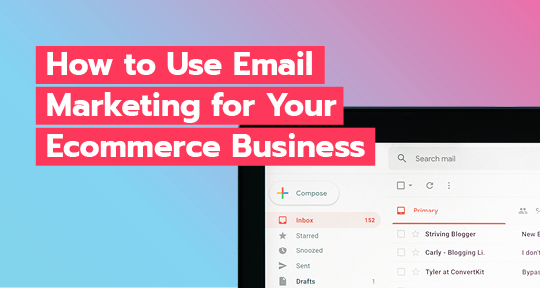Where to start with Email Marketing
Email Marketing Campaigns take a lot of work to get done, however, if you have them set up correctly before your launch this will create the ideal experience for your customers. This will ensure that each customer will get the best and same experience within your business. Having email marketing already set up will help onsite and offsite traffic drive sales, helping you set a better foundation as your business continues to scale. Creating this foundation will capture, convert, and recollect leads. With different types of customers in different stages of their purchasing journey, you can create specific email funnels for your post-purchase, new customer, abandoned cart, and more. By spending time on creating great copywriting for all your website, popups, freebies, and brand experience: you will further your customers’ purchasing journey that will convert leads into customers. Over time this will help you save money on ads.
The Formula for Great Emails
There are a couple of rules you should abide by to have the best foundation possible.
- Design. How people perceive your business is important
- You want to build trust with your customers and turn them into fans. Aside from your logo, typography is extremely important. You want your email to be as clean and precise as possible. By creating space for 60% text and 40% images, you will get better results by not cluttering the space given on the screen. Remember some of your customers will be viewing your email on their mobile devices, thus creating less real estate for visual elements.
- This is also important because email providers will place you in different categories that are not your customers’ primary inbox. For example, when you receive emails from companies you might see that they are from a ‘specific person’ rather than the overall company itself. This is so that they have a higher chance of not ending up in spam but in your inbox. The second aspect of the design is that even if an email is incredibly designed, some users have the loading of images turned off. This means they will never see your design unless they turn that feature off.
- Copywriting. Your email marketing campaign needs to solely understand what your customers’ needs, wants, emotions, and pain points are. By catering to these points, you will be able to write clear and concise emails that play to those aspects, granting you a higher chance of creating a conversion.
- First, you need to fulfill the promise you made your customer when they granted you access to include them in your email marketing, may that be a coupon or a free download. Second, you need to show them on an emotional level how your product is going to help them. What is their pain point, and how are you going to solve it? Third, further these emotional points by supplying evidence that proves how you are going to solve their problem. For example, testimonials and reviews. Customers do not like to be the first person to buy a product, if they see other people have purchased the product and liked it, then they are more likely to convert.
- Finally, have a great Call to Action (CTA). You need to make it simple and easy for a customer to access what you are wanting them to do. May that be the purchase, a review, or a survey. Tell them what you want them to do, don’t be pushy but keep it clean and clear. Your button should be eye-catching and part of the overall experience. Your Call to Action will give you data on what is converting. This can take time to perfect; we recommend using A/B testing to see what your customers like seeing best.
How to grow your subscriber list
The truth about growing your email list is that it is a give-and-take exchange. Consumers want something in return for handing over their email. There are many great ways to initiate this exchange. Here are a few:
- Offering a discount. “Get your unique discount code in your inbox today!”
- Popups. There are so many plugins you can use on your Shopify store. “Spin the wheel for your guaranteed discount or free item.”
- A ‘subscribe to our newsletter’ in the footer of your website. These are great and are for true fans.
- Freebies. What is a free digital download you can give your audience that they will love?
- Referral Program. “When your friend purchases, you’ll get 20% off!” This is a great way to grow the community not only online but through word of mouth.
- Quiz Results. Take a short quiz to figure out what products would be best for their skincare routine, and get their personalized results via email. Have fun with it, and think of a quiz that will allow your audience to further interact with your brand.
You need to learn where your target audience hangs out online, whether it be Facebook, Instagram, Pinterest, or TikTok. Knowing this will help you create ads and specific email campaigns targeted at these online communities. These platforms are great for running giveaways and quizzes. Your target audience will interact with you for the chance of winning your products. This will help you gain valuable information about your audience, product, and what is working for your business online. Afterward, you can then run ads for everyone who signed up for your giveaway. Gives you a higher chance at conversion, as they have already shared with you that they want your product.
Therefore, it is important to have your foundation already set. By creating your email marketing funnels early, you will be able to target and retarget your customers as you gain valuable data from them.
A/B Testing in Email Marketing
Even with the variability of the email marketing landscape, A/B testing is a powerful tool that can help you do three things: test your headlines and calls-to-action to better drive open and click rates, understand which designs and layouts resonate with your readers, and improve your deliverability in terms of bounce rates and complaints. The result is a better, more effective email marketing campaign for your organization.
In the end, A/B testing can be a lot of work, but if you have the time and the patience to dig through the numbers, it can help you make your email marketing campaigns more effective. There’s no guarantee that your campaign will have wildly different results with every test; sometimes you might even see slight increases in engagement. What’s most important is how you interpret the data—and use the information from your tests to tweak your campaigns. These tweaks, in turn, may lead to further changes in results. So don’t think of A/B testing as a magic bullet or a quick fix; think of it as something that will make your email marketing more effective over time.
Why Email Marketing is Important
To capture leads for your business you will want to set up your emails so that there are multiple steps in the purchase journey. By doing this you can better prepare your business for all types of customer interactions from entering, buying, and leaving your store. You will want to create an email marketing campaign that is easy and quick for your customer to reach all the content they need, get a better look at all the products and services you provide, promoting actions that lead to conversions but also showcase outstanding products for upgrades and incentives being used in special offers. For emails that are triggered by site activity such as abandoned carts, or any other specific steps on your website, use smart sequences to send your customer personalized content based on their specific engagement. Selling your products directly through email allows you to bypass third-party services. This is ideal because with every sale comes up-sells, cross-sells, referrals, and repeat business.
To summarize, email marketing is more than just a way to turn your customers into loyal brand advocates; a successful email marketing campaign can also help you optimize your business, increase sales, and attract new leads. While they may not be the first communication tool that comes to mind, email marketing campaigns are incredibly valuable tools that should be used by every business.


